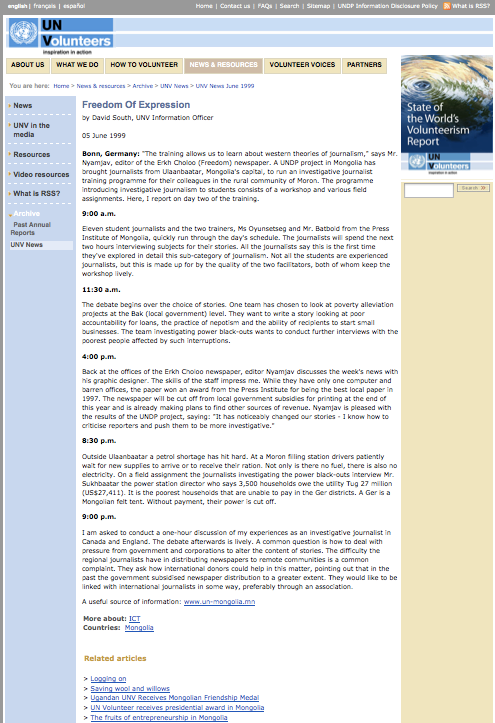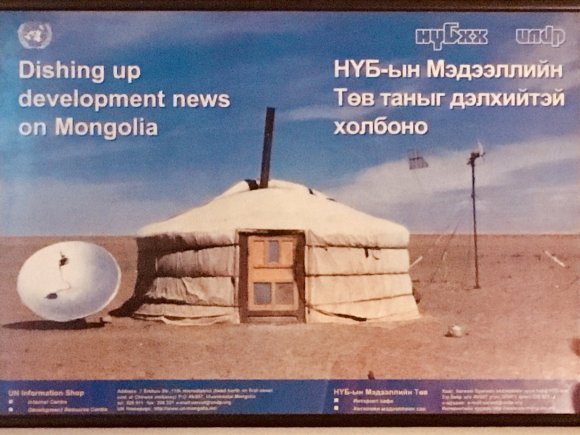By David South, UNDP Mongolia Communications Coordinator
Ulaanbaatar, Mongolia (Blue Sky Bulletin, Issue Number 6, May/June 1998)
Cars, mostly olive green Russian jeeps, weave in and out of the five-storey apartment blocks of downtown Dalanzadgad. Running through the centre of the capital of Omnogobi is a gardened boulevard, where families hide from the hot sun under trees.
That one road, and the few feeding into it, are the only enforced guides for drivers. It can be seen across Mongolia – settlements crisis-crossed by drivers looking for the shortest route to their destination. It doesn’t help that there are no natural or manmade barriers to prevent drivers going their own way.
In Dalanzadgad, a UNDP project to protect the environment from off-road driving has had an unexpected outcome: it has galvanized the community to make the streets safer by adding over 100 traffic signs. The project “Soil and Road” under UNDP’s Environmental Public Awareness Programme (EPAP), started modestly. According to project director and local Khural head Mr. Byambasuren, the number of vehicles in the area shot up from 800 three years ago, to 1,500 today. Most of these vehicles drive off-road, kicking up dust and destroying flora, contributing to desertification.
“The disease rate here is very high because of the dust and we have many traffic accidents involving children,” says Byambasuren.
With a small grant of Tg 2.5 million from EPAP the project was able to organize workshops for local drivers where they signed a contract to not drive off-road, facing stiff penalties from the traffic police if caught.
A media campaign was also organized and posters and brochures distributed. The local traffic police were so impressed by the project they decided to chip in a further Tg 2 million to construct traffic signs and install concrete calming barriers.
At first they explored the possibility of buying ready-made signs but found the costs too prohibitive.
“We wanted to get signs that glowed at night but they were too expensive. We decided to make our own out of old oil drums.”
In a room thick with the smell of fresh paint sits the traffic signs. They all use internationally recognized symbols and only upon closer inspection, reveal their past life sitting on top of an oil drum. Each sign costs Tg 2,000 to make. In addition to the signs traffic calming concrete barriers have been installed in 20 places throughout Dalanzadgad.
Next year Byambasuren will target the large ger districts that surround the centre of Dalanzadgad. He has a message for any driver who doesn’t obey: “We will be banging on their heads with lectures if they break the rules!,” he says with a laugh.
The Environmental Public Awareness Handbook: Case Studies and Lessons Learned in Mongolia by Robert Ferguson can be found here: http://openlibrary.org/b/OL169160M/Environmental-Public-Awareness-Handbook



This work is licensed under a
Creative Commons Attribution-Noncommercial-No Derivative Works 3.0 License.
ORCID iD: https://orcid.org/0000-0001-5311-1052.
© David South Consulting 2022

















You must be logged in to post a comment.